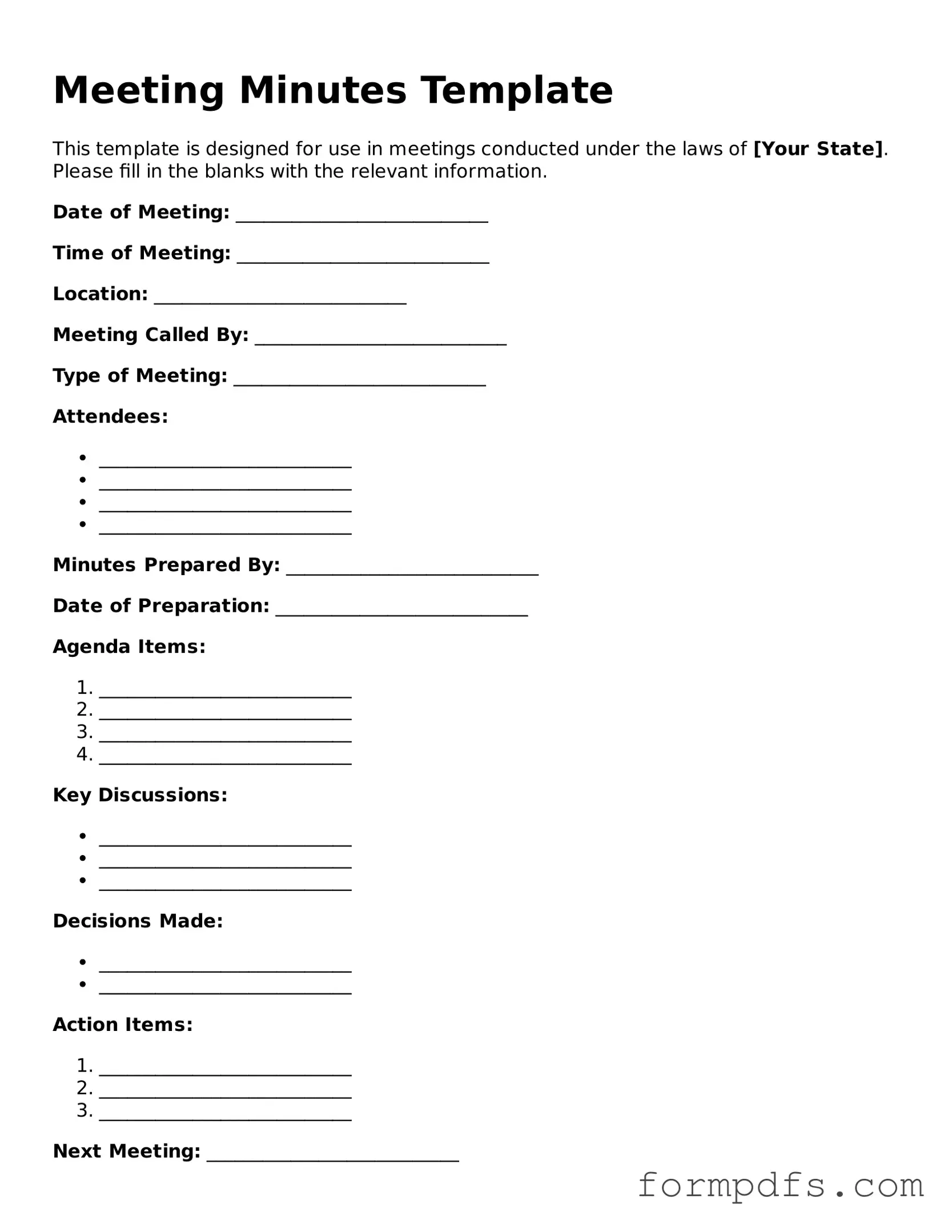What are meeting minutes?
Meeting minutes are a written record of what was discussed and decided during a meeting. They serve as an official account of the proceedings, capturing key points, decisions made, and action items assigned. This documentation is crucial for transparency and accountability, allowing attendees and those who were absent to stay informed about the meeting's outcomes.
Why are meeting minutes important?
Meeting minutes play a vital role in any organization. They help keep everyone on the same page by providing a clear summary of discussions and decisions. This record can prevent misunderstandings and ensure that everyone knows their responsibilities moving forward. Additionally, they serve as a legal record, which can be important for compliance and governance purposes.
Who is responsible for taking meeting minutes?
Typically, the responsibility of taking minutes falls to a designated individual, often the secretary or a member of the organization. However, anyone can take minutes, provided they are attentive and organized. It's essential for the minute-taker to capture the essence of the meeting without inserting personal opinions or biases.
What should be included in meeting minutes?
Meeting minutes should include the date, time, and location of the meeting, along with a list of attendees and absentees. Key points discussed, decisions made, and any action items assigned should be clearly outlined. It’s also helpful to note any deadlines for these action items. A summary of discussions can provide context for future reference.
How soon should meeting minutes be distributed?
Ideally, meeting minutes should be distributed within a few days of the meeting. This promptness ensures that the information is fresh in everyone’s mind and allows for any necessary corrections to be made while the details are still recent. Timely distribution also helps maintain momentum on action items discussed during the meeting.
Can meeting minutes be amended?
Yes, meeting minutes can be amended. If an error is discovered after the minutes have been distributed, it is important to correct it. This can be done by noting the amendment in the next meeting's minutes or by issuing a corrected version of the original minutes. Transparency is key; everyone should be aware of any changes made.
